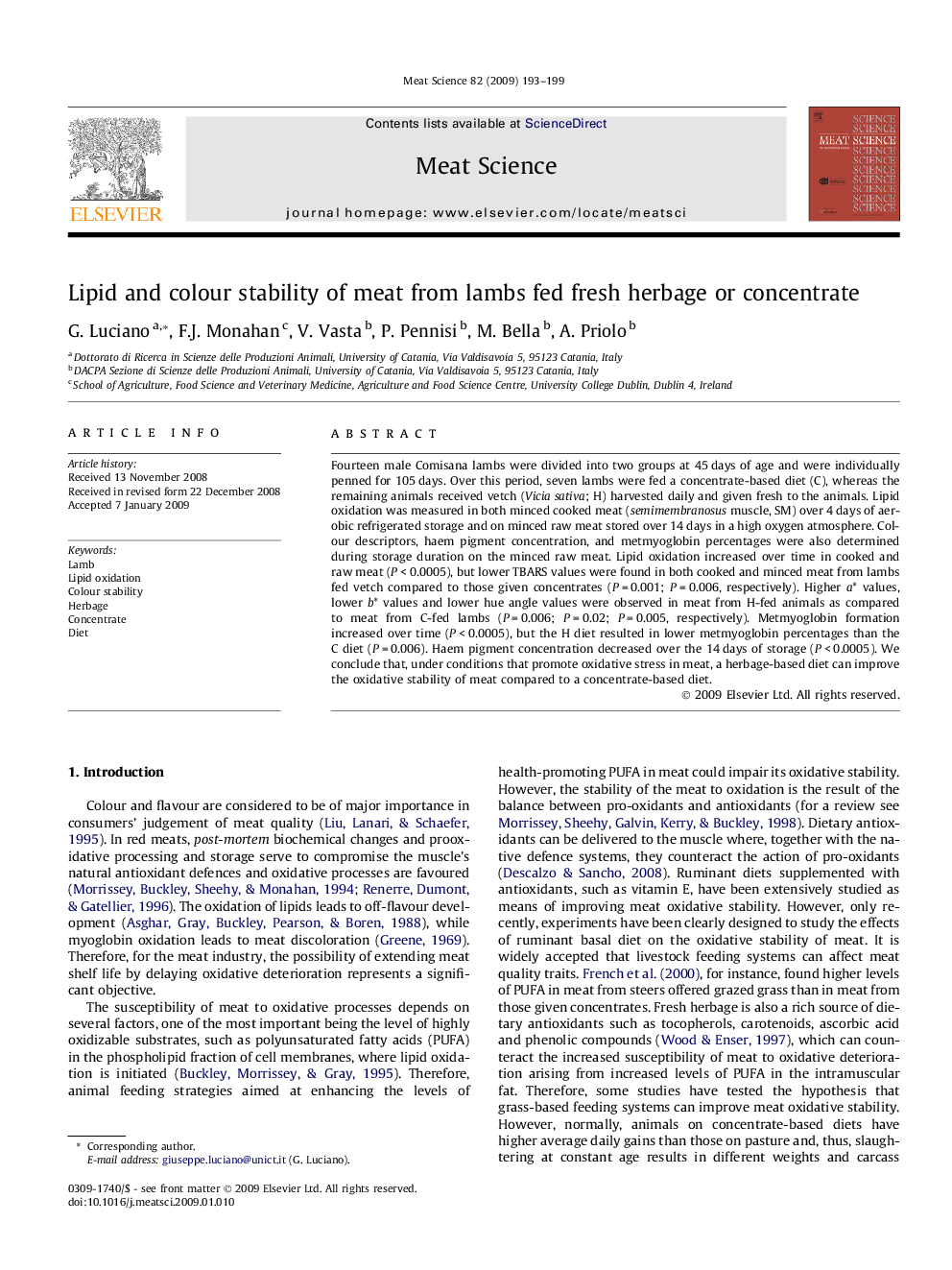| Article ID | Journal | Published Year | Pages | File Type |
|---|---|---|---|---|
| 2450984 | Meat Science | 2009 | 7 Pages |
Fourteen male Comisana lambs were divided into two groups at 45 days of age and were individually penned for 105 days. Over this period, seven lambs were fed a concentrate-based diet (C), whereas the remaining animals received vetch (Vicia sativa; H) harvested daily and given fresh to the animals. Lipid oxidation was measured in both minced cooked meat (semimembranosus muscle, SM) over 4 days of aerobic refrigerated storage and on minced raw meat stored over 14 days in a high oxygen atmosphere. Colour descriptors, haem pigment concentration, and metmyoglobin percentages were also determined during storage duration on the minced raw meat. Lipid oxidation increased over time in cooked and raw meat (P < 0.0005), but lower TBARS values were found in both cooked and minced meat from lambs fed vetch compared to those given concentrates (P = 0.001; P = 0.006, respectively). Higher a* values, lower b* values and lower hue angle values were observed in meat from H-fed animals as compared to meat from C-fed lambs (P = 0.006; P = 0.02; P = 0.005, respectively). Metmyoglobin formation increased over time (P < 0.0005), but the H diet resulted in lower metmyoglobin percentages than the C diet (P = 0.006). Haem pigment concentration decreased over the 14 days of storage (P < 0.0005). We conclude that, under conditions that promote oxidative stress in meat, a herbage-based diet can improve the oxidative stability of meat compared to a concentrate-based diet.
